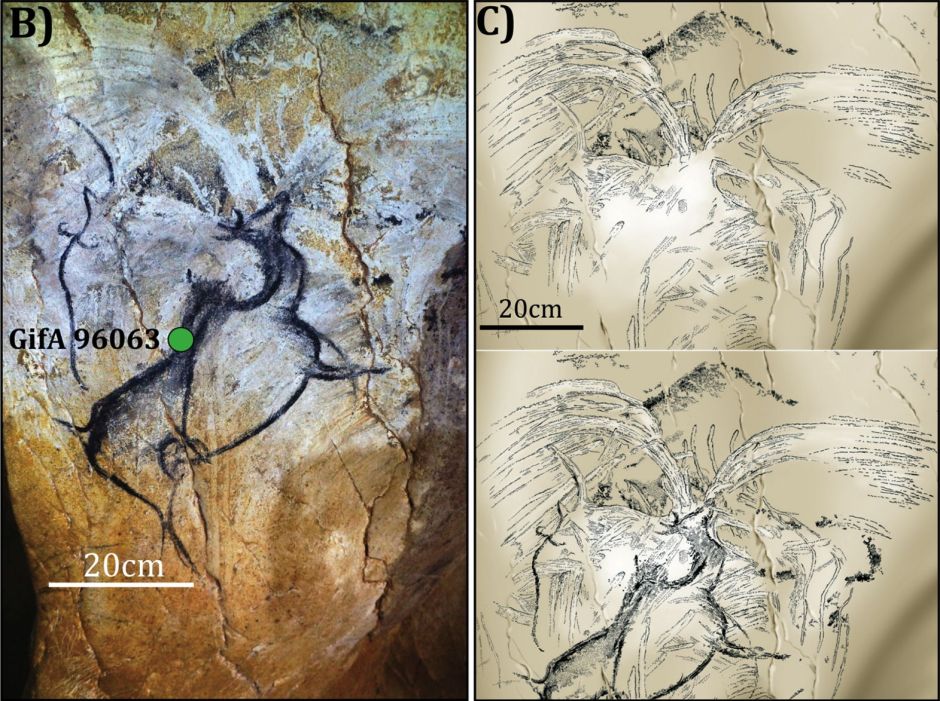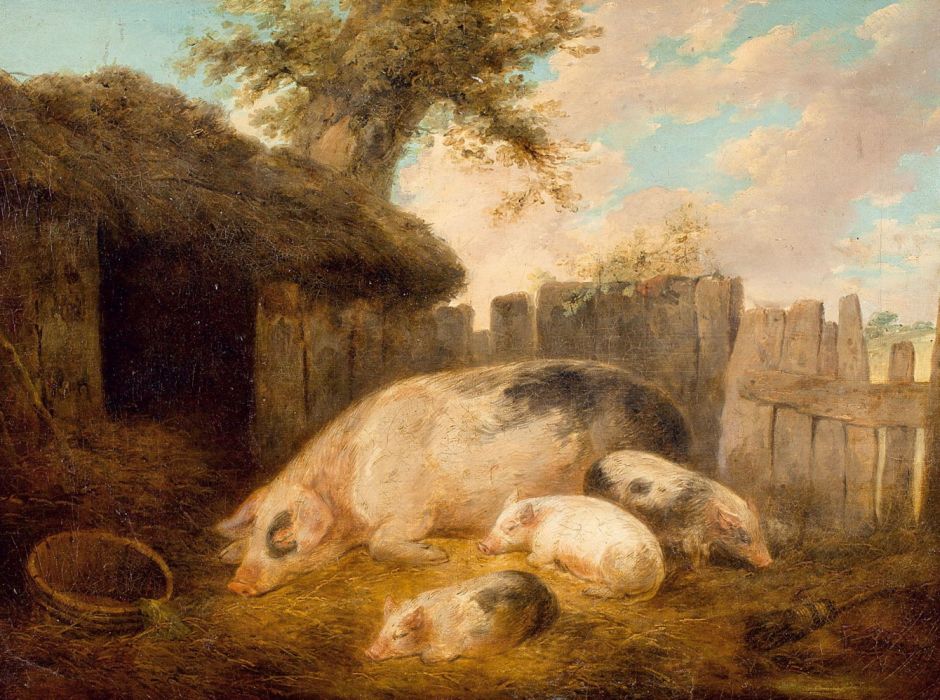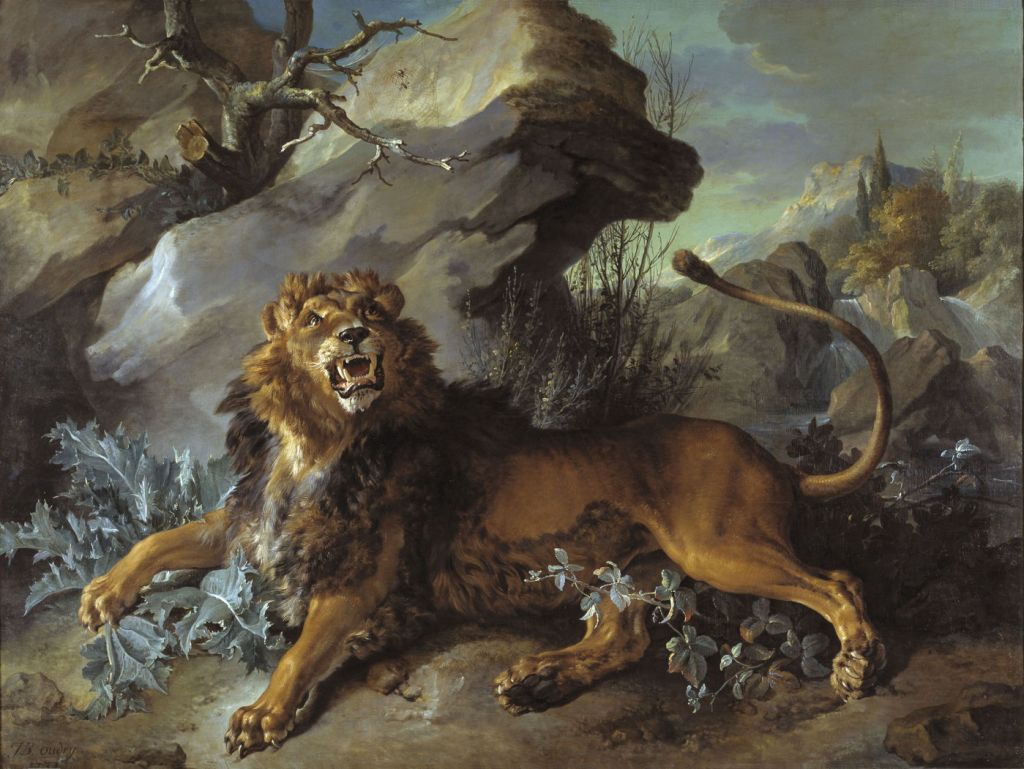Evidence from surviving cave art shows that humans have been painting animals for well over thirty thousand years.

Although they continued to feature in many Renaissance paintings, the specialty of animal painting exercised by artists known in French as an animalier, didn’t exist until the Dutch Golden Age, and the likes of Paulus Potter.

Potter’s first masterpiece is The Bull (also widely known as The Young Bull) (1647), which is nearly life-sized, and almost hyperreal in its surface details. Originally intended just as a portrait of the central bull, Potter enlarged the canvas to accommodate (from the left) a ram, lamb, ewe, herdsman, cow, and above them a bird of prey, possibly a buzzard. Beyond them are more cattle in the meadows, which recede to the church of Rijswijk, which is between Delft and The Hague.

He went on to paint portraits such as Two Pigs in a Sty (1649), featuring two hairy pigs at rest. Many of the older breeds of pig were more hirsute than modern varieties, and Potter has painted their coats realistically, as well as skilfully lighting the face of the sow sat on her haunches.

Potter’s Cows Grazing at a Farm from 1653 was one of his last paintings, and apart from its meticulous detail, its rich lighting effects might be more typical of Corot two hundred years later.
Potter died tragically young the following year, but the new sub-genre was taken up by others, including Adriaen van de Velde.

His undated Milkmaid with Cow and Goats in Front of a Barn is a farmyard delight, with the cow being milked looking directly at the viewer.

The Hut (1671) was one of van de Velde’s last paintings, and has long been esteemed in the Netherlands. It is one of his most natural compositions, sparkling with bright colour in the clothing and animals. The artist even adds the reality, perhaps as a touch of humour, of some fresh cowpats.
Some Dutch artists specialised even further: Melchior d’Hondecoeter (1636-1695) painted birds almost exclusively.

Concert of the Birds (1670) is one of d’Hondecoeter’s more elaborate paintings.
With hunting always a popular pastime among those rich enough to afford paintings, depictions of field sports became popular. Those demanded accurate representation of horses, dogs and their quarry, which drew artist to painting a wider range of animals. Some, like Jean-Baptiste Oudry, turned their skills to animals in narrative settings such as fables.

One of Oudry’s early paintings of fables, The Lion and the Spider (The Lion and the Fly) from 1732 shows a story which doesn’t appear in the fables of La Fontaine. A gnat or fly was buzzing around the head of a lion, who became annoyed as a result. The lion tried to kill the gnat/fly, without success. The gnat/fly stung the lion several times, only making the lion more upset. Defiantly, the gnat/fly told the lion that he wasn’t scared of him, and flew off to broadcast his success, straight into a spider’s web, where he was eaten by the spider.
Oudry’s lion is a magnificent beast, and studies the fly’s fate intently.

One of his last paintings of fables, The Dog Carrying his Dinner to his Master from 1751, tells La Fontaine’s fable of that name. A dog was trained to deliver his master’s dinner when the latter was at work, without eating the food that he was carrying. One day, while carrying his master’s meal, the dog was attacked by another dog. He stood and fought for it until other dogs turned up and joined in. Seeing he was outnumbered, the trained dog offered to share the food out between them, and seized a large piece for itself.
By the end of the eighteenth century, animaliers weren’t uncommon, and some very successful. In Britain, George Stubbs (1724-1806) made a good living from painting horses for their affluent owners. Among the others were two artists whose reputations were eclipsed by the rise of landscape masters such as JMW Turner: George Morland (1763–1804) and James Ward (1769–1859).

Morland’s painting of Guinea Pigs (1792) is probably the finest depiction of this species by any artist.

Of farm animals, Morland appears to have had strongest affection for pigs. In Front of the Sty (1793) shows what is probably a Gloucester Old Spot or a related breed, a sow asleep with three of her well-grown piglets.
James Ward also had a similar predilection for pigs.

Ward’s Gloucestershire Old Spot (1800-1805) plants this pig’s great bulk into one of his delightful rustic landscapes.

This portrait of Dr. Syntax, a Bay Racehorse, Standing in a Coastal Landscape, an Estuary Beyond (1820) shows one of the most successful racehorses of all time, Doctor Syntax (1811-38), owned by Ralph Riddell.

Ward also turned to more exotic animals in tense situations. The Moment from 1831 shows a white horse confronting a huge and menacing boa constrictor (or ‘Liboya Serpent’) and might perhaps be mistaken for a work by Delacroix.
Ward was the precursor of the peak of animal painting to come later in the nineteenth century, which I’ll illustrate in tomorrow’s sequel.

